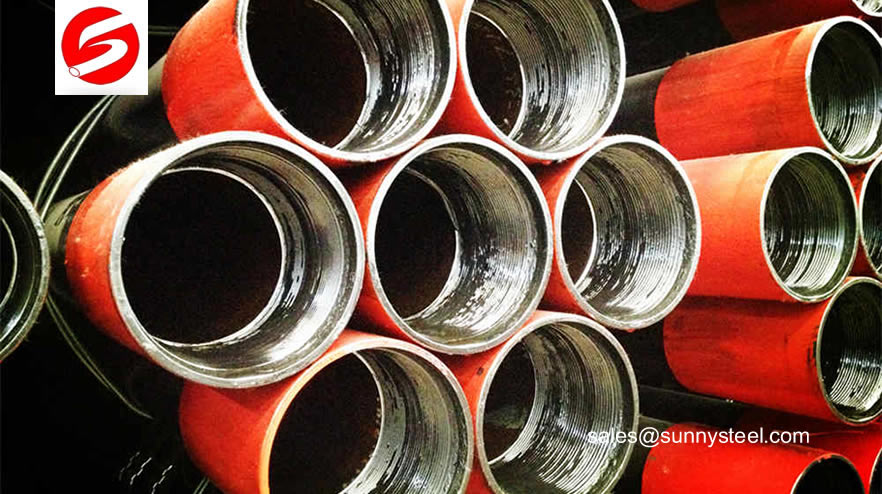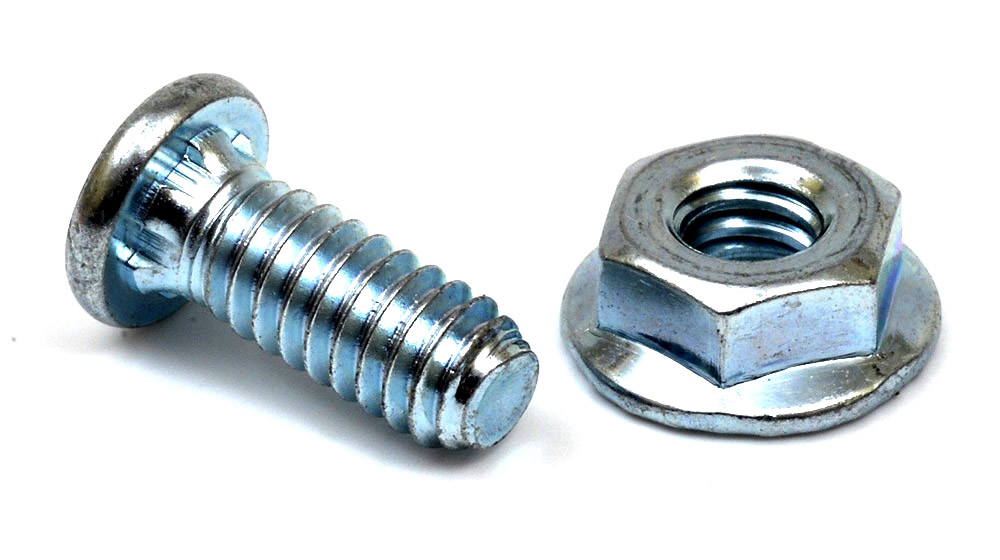- Get link
- X
- Other Apps
Stainless Steel Seamless Pipes is a hollow steel bar, a large number of pipes used for conveying fluids, such as oil, gas, water, gas, steam,heat exchanger,mechanical machine.
In addition, engaging in bending, torsional strength of the same, lighter, and they are also widely used in the manufacture of mechanical parts and engineering structures.
Steel pipes are long, hollow tubes that are used for a variety of purposes. They are produced by two distinct methods which result in either a welded or seamless pipe. Industrial Metal Supply carries a wide variety of stainless steel pipe products.
Stainless Steel Pipe Applications
Stainless steel pipe has a wide variety of applications, some of the most prevalent include:- Automobile Manufacturing
- Refrigeration Units
- Heating & Plumbing Systems
- Flagpoles
- Street Lamps
- Bicycle Frames
Also used in producing all kinds of conventional weapons, the barrel, artillery shells and so on...
See the full data for Stainless steel pipes
Stainless steel pipes are used mainly for industrial use, plants, sanitation, heat exchangers, and machine structures.
Normal Standard
| Item | ASTM A213/A213M | ASTM A312/A312M | ||||
| Grade | TP304 | TP304L | TP304 | TP304L | ||
| TP316 | TP316L | TP316 | TP316L | |||
| TP317 | TP317L | TP317 | TP317L | |||
| TP347 | TP310S | TP347 | TP310S | |||
| TP309H* | TP310H* | TP317* | TP310H* | |||
| TP321HΔ | TP321HΔ | |||||
Yield Strength σ0.2 (Mpa) | ≥170; | ≥205 | ≥170; | ≥205 | ||
Tensile Strength σb (Mpa) | ≥485 | ≥515 | ≥485; | ≥515 | ||
Elongation % | ≥35 | ≥35 | ≥35 | ≥35 | ||
| Flattening Test | H=1.09t/(0.09+t/D) | H=1.09t/(0.09+t/D) | ||||
| Flange Test | 21-68% | |||||
| Intergranular corrosion | "*"﹑"Δ" ASTM E112 "Δ" min 7#, "*" min 6# | "*"﹑"Δ"ASTM E112, min 6# | ||||
| Hydraulic test(Mpa) | D | P max | P=220.6t/D | D | P max | ASTM A530/A530M D≤270MM P=2Rt/D R=50%σ0.2 |
| <25.4 | 7 | ≤88.9 | 17 | |||
| 25.4-<38.1 | 10 | |||||
| 38.1-<50.8 | 14 | >88.9 | 19 | |||
| 50.8-<76.2 | 17 | |||||
| 76.2-<127 | 24 | |||||
| ≥127 | 31 | |||||
| Metallograph Analysis | STM A262 E | ASTM A262 E | ||||
| Non-Destructive Test | ASTM E213 E309 E426 | ASTM E213 E309 E426 | ||||
| Hardness | HRB<90 | RB<90 | ||||
Chemical composition
| Grade | Chemical Composition | ||||||||
| C (max) | Si (max) | Mn (max) | P (max) | S (max) | Ni | Cr | Mo | Other | |
| TP 304 | 0.08 | 0.75 | 2 | 0.04 | 0.03 | 8-11 | 18-20 | ||
| TP 304H | 0.04-0.10 | 0.75 | 2 | 0.04 | 0.03 | 8-11 | 18-20 | ||
| TP 304L | 0.035 | 0.75 | 2 | 0.04 | 0.03 | 8-13 | 18-20 | ||
TP 309S | 0.08 | 0.75 | 2 | 0.04 | 0.03 | 8-13 | 18-20 | ||
| TP 310S | 0.08 | 0.75 | 2 | 0.045 | 0.03 | 12-15 | 22-24 | ||
| TP 316 | 0.08 | 0.75 | 2 | 0.04 | 0.03 | 19-22 | 24-26 | ||
| TP 316L | 0.035 | 0.75 | 2 | 0.04 | 0.03 | 10-15 | 16-18 | ||
| TP 316Ti | 0.08 | 0.75 | 2 | 0.04 | 0.03 | 11-14 | 16-18 | ||
| TP 317 | 0.08 | 0.75 | 2 | 0.04 | 0.03 | 11-14 | 16-18 | ||
| TP 321 | 0.08 | 0.75 | 2 | 0.04 | 0.03 | 9-13 | 18-20 | ||
| TP 321H | 0.04-0.10 | 0.75 | 2 | 0.04 | 0.03 | 9-13 | 17-20 | ||
| TP 347 | 0.08 | 0.75 | 2 | 0.04 | 0.03 | 9-13 | 17-20 | ||
| TP 347H | 0.04-0.10 | 0.75 | 2 | 0.04 | 0.03 | 9-13 | 17-20 | ||
Tolerance grade
| Grade | Outside diameter tolerance | Grade | Wall thickness tolerance |
| D1 | ±1.50% but at least ±0.75mm | T1 | ±15% but at least ±0.60mm |
| D2 | ±1.00% but at least ±0.50mm | T2 | ±12.5% but at least ±0.40mm |
| D3 | ±0.75% but at least ±0.30mm | T3 | ±7.5% but at least ±0.15mm |
| D4 | ±0.50% but at least ±0.10mm | T4 | ±5.0% but at least ±0.10mm |
Tolerance standard
| Item | ASTM A213 | ASTM A312 | ASTM A269 | |||
| O.D. | tolerance | O.D. | tolerance | O.D. | tolerance | |
| Outside diameter tolerance(mm) | <25.4 | ±0.10 | 10.3-48.3 | +0.4/-0.8 | 12.7 < | +0.13/-0.13 |
| 25.4-≤38.1 | ±0.15 | >48.3-114.3 | +0.8/-0.8 | 12.7-38.1 | +0.13/-0.13 | |
| >38.1-<50.8 | ±0.20 | >114.3-219.1 | +1.6/-0.8 | 38.1-88.9 | +0.25/-0.25 | |
| 50.8-<63.5 | ±0.25 | >219.1-457.2 | +2.4/-0.8 | 88.9-139.7 | +0.38/-0.38 | |
| 63.5-<76.2 | ±0.30 | >457.2-660.4 | +3.2/-0.8 | 139.7-203.2 | +0.76/-0.76 | |
| 76.2-≤101.6 | ±0.38 | >660.4-864 | +4/-0.8 | |||
| >101.6-≤190.5 | ±0.38/-0.64 | >864-1219.2 | +4.8/-0.8 | |||
| >190.5-≤228.6 | ±0.38/-1.14 | |||||
| Thickness tolerance(mm) | O.D. | tolerance | ±12.5%t | O.D. | tolerance | |
| ≤38.1 | +20%t/0 | ≤38.1 | ±15%t | |||
| >38.1 | +22%t/0 | >38.1 | ±10%t | |||
The Test Requirements of Standards
| Standard | Chemical Composition | Tensile Strength | Yeild Point | Tension Test | Rockwell Hardness | Flattening Test | Flaring Test | Hydrostatic |
| ASTM A312 | X | X | X | X | X | |||
| ASTM A213 | X | X | X | X | X | X | X | X |
| ASTM A269 | X | X | ||||||
| ASTM A511 | X | X | X | X | ||||
| ASTM A789 | X | X | X | X |
| Standard | Ultrasonic | Eddy Current | Intergranular Corrosion | Grain size | α/γ | Surface Quality | Tolerance | |
| ASTM A312 | X | X | X | |||||
| ASTM A213 | X | X | X | |||||
| ASTM A269 | X | X | X | |||||
| ASTM A511 | X | X | ||||||
| ASTM A789 | X | X | X | X |
ASTM Mechanical Properties
| Grade | Tensile Strength Min(Mpa) | Yeild Point Min(Mpa) | EL. Min(%) | Rockwell Max |
| TP 304 | 515 | 205 | 35 | 90 |
| TP 304H | 550 | 240 | 35 | 90 |
| TP 304L | 485 | 170 | 35 | 90 |
| TP 309S | 515 | 205 | 35 | 90 |
| TP 310S | 515 | 205 | 35 | 90 |
| TP 316 | 515 | 205 | 35 | 90 |
| TP 316L | 485 | 170 | 35 | 90 |
| TP 316Ti | 515 | 205 | 35 | 90 |
| TP 317 | 515 | 205 | 35 | 90 |
| TP 321 | 515 | 205 | 35 | 90 |
| TP 321H | 515 | 205 | 35 | 90 |
| TP 347 | 515 | 205 | 35 | 90 |
| TP 347H | 515 | 205 | 35 | 90 |
Heat treatment technology of stainless steel pipe surface
For the heat treatment technology of the surface of stainless steel pipes, non-oxidation continuous heat treatment furnaces with protective gas are generally used abroad for intermediate heat treatment and final heat treatment of finished products. As a bright surface without oxidation can be obtained, the traditional pickling process is eliminated. The adoption of this heat treatment process not only improves the surface of stainless steel pipes, but also overcomes the environmental pollution caused by pickling.
According to the manufacturer of stainless steel pipes, according to the current world development trend, bright annealing continuous heat treatment furnaces are basically divided into the following two types:
(1) Roller-type bright annealing heat treatment furnace.
This bright annealing furnace type is suitable for heat treatment of large-size and large-volume special-shaped stainless steel pipes, with an hourly output of above 1.0 Tons. The protective gases that can be used are high-purity hydrogen, decomposed ammonia and other protective gases. It can be equipped with a convection cooling system to cool the special-shaped stainless steel tube faster.
(2) Mesh belt type bright annealing heat treatment furnace.
This bright annealing furnace type is suitable for small-diameter thin-walled precision special-shaped stainless steel pipes. The hourly output is about 0.3 to 1.0 Tons. The length of the steel pipe can be up to 40m. It can also be used to process capillary tubes in coils. Equipped with convection cooling system for fast cooling. Using gas fuel or electric heating, various protective gases can be used. The stainless steel pipe after this furnace-type heat treatment has no scratches and good brightness surface.
Tensile test and hardness test of stainless steel pipe?
Tensile strength test is to make a sample of stainless steel pipe, pull the sample to break on a tensile testing machine, and then measure one or several mechanical properties, usually only the tensile strength, yield strength, elongation after fracture and section are measured Shrinkage. Tensile strength test is the most basic test method for mechanical properties of metal materials. Almost all metal materials require tensile test as long as they have requirements for mechanical properties. Especially for those materials whose shape is not convenient for hardness test, tensile strength test becomes the only means of testing mechanical properties.
The hardness test is to slowly press a hard indenter into the surface of the sample with a durometer under specified conditions, and then test the depth or size of the indentation to determine the hardness of the material. Hardness test is the simplest, fastest and easiest method in material mechanical property test. The hardness test is non-destructive, and there is an approximate conversion relationship between the material hardness value and the tensile strength value. The hardness value of the material can be converted into the tensile strength value, which has great practical significance.
Because the tensile strength test is not easy to test, and it is convenient to convert the hardness to the strength, more and more people only test the hardness of the material and less test its strength. In particular, due to the continuous advancement of hardness tester manufacturing technology and innovations, it is now possible to directly test the hardness of some materials that could not be directly tested before, such as stainless steel tube, stainless steel sheet and stainless steel strip. Therefore, there is a tendency for hardness tests to gradually replace tensile tests.
- Get link
- X
- Other Apps











Comments